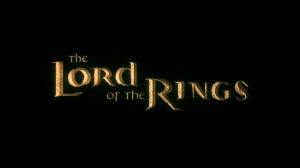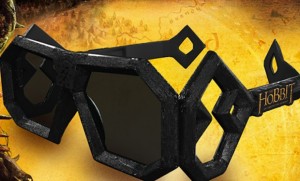Adaptation challenge one: the ex-prequel dilemma
 The Lord of the Rings was written as a sequel to The Hobbit, and because readers have always been advised to start with the earlier, simpler book, the vast majority first encountered Middle-earth in the earlier chronological tale. But that is not the experience that most contemporary viewers are about to have. Everyone who is unfamiliar with the books but has seen The Lord of the Rings already will be viewing The Hobbit as a prequel — and considering how many more people see movies than read fiction these days, that proportion may be much larger than the average Tolkien fanatic imagines.
The Lord of the Rings was written as a sequel to The Hobbit, and because readers have always been advised to start with the earlier, simpler book, the vast majority first encountered Middle-earth in the earlier chronological tale. But that is not the experience that most contemporary viewers are about to have. Everyone who is unfamiliar with the books but has seen The Lord of the Rings already will be viewing The Hobbit as a prequel — and considering how many more people see movies than read fiction these days, that proportion may be much larger than the average Tolkien fanatic imagines.
ROTK sold an estimated 61.6 million tickets in the U.S., currently the seventh-best figure of the millennium after Avatar, The Avengers, The Dark Knight, Shrek 2, Spider-Man, and Pirates of the Caribbean: Dead Man’s Chest. A 2002 British study of repeat movie viewing found that 11% of the LOTR:FOTR audience had seen it more than once, so it’s very likely that ROTK was seen by upwards of 50 million viewers in the U.S., even before DVD rentals. By comparison, the seventh-best selling novel in English of the millennium (excluding books from the same series) is a tie between The Kite Runner and, ironically, The Lovely Bones, at an estimated 10 million copies each, worldwide. (If you’re curious, the top six appear to be The Da Vinci Code, the last Harry Potter, The Girl with the Dragon Tattoo, Twilight or a sequel, The Hunger Games, and Christian novel The Shack.) While the book has sold 150 million copies, that’s a worldwide figure over nearly fifty years of continuous popularity, and many readers have bought it more than once. It seems almost certain that a majority of the 50 million U.S. viewers of ROTK had never read the books.
By the way, this huge disparity in size between the audiences for movies and books explains the puzzling relative lack of popularity of the movies. Seriously. The book is the most popular novel of all time, and the film adaptations are so successful that they appear to have the highest user ratings of any movies at Netflix. (Specifically, the extended editions of FOTR and ROTK do. Nor is this, by the way, an elitist audience — Alvin and the Chipmunks: The Squeakwell has a higher rating than Annie Hall, and National Treasure: Book of Secrets bests 2001: A Space Odyssey). And yet ROTK ranks just 15th in ticket sales among movies of the VCR / DVD era (older movies had the benefit of many more repeat viewings and can’t fairly be compared). There just aren’t enough fans of even the most popular book to take you further up the list; the popularity of the book is essentially only a marketing hook. After that, the films are on their own — and LOTR is a bit more challenging in scope and complexity than Batman or Home Alone, which limits its audience despite its brilliance.
So for the time being, the huge size of movie audiences means that The Hobbit film trilogy is functioning largely as a prequel. There are young viewers and a few older ones who will start here, and many viewers who know both stories already. The surprising majority, though, knows only the later story and is about to experience the earlier one for the first time. But as soon as all the movies have left theaters and are out on disk, this will change. Viewers new to the films will ask which trilogy they ought to see first, and for the most part they’ll be given the same answer that readers have always been: they’re best experienced in internal chronological order, and thus in the order of Tolkien’s conception.
 Some viewers, however, will opt to see the technologically less sophisticated trilogy first, so they’ll start with LOTR. In particular, anyone who has a 3D TV is likely to want to see the 2D trilogy first and then the 3D, internal chronology be damned — after all, seeing them “backwards” was good enough for an entire worldwide audience. As 3D TV achieves good market penetration (which should happen very quickly once glasses-free technology is perfected), this will become a very common viewing strategy. Meanwhile, however, the cost of 3D post-conversion will be dropping steadily, and the quality increasing. So at some point, a 3D conversion of LOTR will become financially and artistically irresistible. When that happens, the only argument for seeing the trilogies out of chronological order will disappear, and the best order for seeing them will experience another switch. (The 3D conversion is when we’ll finally see the necessary minor CGI improvements to LOTR, such as the upgrading of Gollum in FOTR to the design of the later films.) Second trilogy, first trilogy, second, and then finally first again: that’s the fate of The Hobbit.
Some viewers, however, will opt to see the technologically less sophisticated trilogy first, so they’ll start with LOTR. In particular, anyone who has a 3D TV is likely to want to see the 2D trilogy first and then the 3D, internal chronology be damned — after all, seeing them “backwards” was good enough for an entire worldwide audience. As 3D TV achieves good market penetration (which should happen very quickly once glasses-free technology is perfected), this will become a very common viewing strategy. Meanwhile, however, the cost of 3D post-conversion will be dropping steadily, and the quality increasing. So at some point, a 3D conversion of LOTR will become financially and artistically irresistible. When that happens, the only argument for seeing the trilogies out of chronological order will disappear, and the best order for seeing them will experience another switch. (The 3D conversion is when we’ll finally see the necessary minor CGI improvements to LOTR, such as the upgrading of Gollum in FOTR to the design of the later films.) Second trilogy, first trilogy, second, and then finally first again: that’s the fate of The Hobbit.
And that means that the new trilogy has to be structured and told in a way that will work equally well regardless of the order in which the trilogies are viewed. Some things will take care of themselves: the first appearance of the Nazgûl in FOTR is scary and a bit mysterious if you’re seeing that trilogy first and (assuming the Nazgûl appear at the Battle of Dol Guldur), scary and oh-crap-that’s-the-Nazgûl!-evoking if you’re seeing it second. Other material needs to be handled with more care. For instance, the introduction of Sauron in this trilogy has to be separate from and equal to the one in LOTR, neither one rendering the other redundant, both of them able to function as either actual introduction or illuminating back-story. (This need to keep the trilogies functionally independent is why Thomas Monteath’s suggestion elsewhere on this web site that The Hobbit frame story might continue onward and overlap the events of LOTR, thus filling in some of its gaps, is almost certainly wrong; it would permanently force viewers to watch the movies backwards.)
Maintaining this narrative independence is, of course, a challenge faced by every prequel creator, and not everyone is up to it. For instance, it’s widely agreed that The Chronicles of Narnia are best read in the order they were written rather than by internal chronology, and that one-volume collections which place The Magician’s Nephew at the head of the sequence rather than The Lion, the Witch, and the Wardrobe do readers a disservice. Many viewers watching the Star Wars saga in internal chronological order find that the once-stunning revelation at the end of The Empire Strikes Back has been at least somewhat spoiled by the seven hours already devoted to explaining it in detail.
There’s good reason to expect that Jackson et al will do a much better job. Jackson’s original desire was to film The Hobbit first; he only began with LOTR because the rights to the earlier book were a morass. As we are about to see, there is evidence within LOTR that Jackson always hoped or even expected to come back and adapt The Hobbit — a perfectly reasonable expectation given the money to be made. I therefore think that he has been aware, from the beginning, of the need to maintain equipoise between prequel and sequel in the two trilogies. There shouldn’t be anything in one that significantly spoils something in the other, or that fails to makes sense, if you see them in the “wrong” order.


